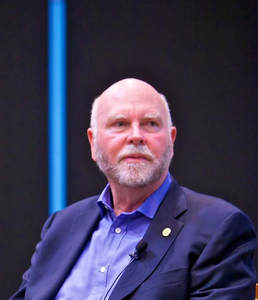|
The trope of the mad scientist has been around for a while, and many people, including scientists, indulge in it as a joke, although some claim it has a grain of truth to it. The classical image of the mad scientist was cemented by the 1931 film Frankenstein, directed by the legendary James Whale. In this movie, the scientist Henry Frankenstein, played by actor Colin Clive, assembles a body from parts stolen from graveyards and proceeds to jolt it with electricity, infusing it with life. Frankenstein’s manic scream “It’s alive!” has become a cultural icon that has been both referenced in academic literature and parodied in popular culture. What is less quoted in the popular realm is what he says afterwards: “Now I know what it feels like to be God!” This seems to be at the heart of the concept of the mad scientist: the original sin, eating the fruit from the tree of knowledge, being like God. And what better way to be like God than to create life? Of course, Frankenstein was barking mad, but don’t sane scientists have a little bit of Frankenstein in them when they seek the knowledge of the inner working of nature and the universe? Doesn’t scientific discovery make scientists feel a little bit like Gods? My response to this question is that it is irrelevant. Scientists are humans, and their behavior during the process of discovery or creation is as complex as that of any other human. In my opinion the important thing is that regardless of what scientists “feel”, they are expected to follow the scientific method. The truth is that Frankenstein’s research, even by the standards of his time, was not very scientific. What was his question? What was his hypothesis? What was the rationale for the whole enterprise? Why try to create life? Why work in isolation without seeking advice from other scientists? Frankenstein was no more a scientist than an astrologer is a scientist. He was not following the scientific method. However, as it turns out, back in 2010 a group of real scientists led by Craig Venter of the Human Genome fame succeeded in creating life. It is instructive to compare what they did with the modus operandi of their fictional counterpart.  In an effort that took more than a decade of solving seemingly unsurmountable technical problems, Venter and his group synthetized a modified chemical copy of the genome of a microorganism called Mycoplasma mycoides and inserted it into a cell of a different species called Mycoplasma capricolum. They engineered the M. mycoides genome in such a way that it would get rid of the endogenous M. capricolum genome. So they ended up with an M. capricolum cell which contained a synthetic M. mycoides genome. The synthetic genome took over the host cells which began multiplying. Unlike most living things which are made by strands of DNA that come from other living things, here, for the first time in history, a life form had been created using a strand of DNA made in a lab and designed by a computer! No one in Venter’s group broke out into maniacal laughter and screamed “It’s alive!”, or claimed to have experienced “what it feels like to be God” (at least publicly). They were all, of course, aware of the philosophical issues revolving around what they were attempting to do, but the point of the project was to answer some very specific scientific questions such as whether the information present in the genome was enough to reproduce a living organism, or whether something else was required. During the whole research process Venter’s group shared information about what they were doing and requested input from other scientists. Additionally, even before performing the first experiments, they asked a team of independent scientists to evaluate the risks, challenges, and ethics involved in creating a new species in the laboratory. The ethics team spent 2 years carrying out this evaluation and then openly shared their conclusions. Venter’s work was not merely an academic exercise, as it led to many practical applications. For example, thanks to the technology developed we have the capacity to quickly sequence the genome of a virus and send the information about the sequence over the internet to centers where the viral genome will be synthesized and used to drive the creation of modified viruses to make vaccines. This sober approach to the scientific enterprise may be more boring than the deranged approach of the quintessential mad scientist, but in real science this is the way things work. Photograph of Craigh Ventor is from the Chemical Heritage Foundation reproduced here under a Attribution-Share Alike 3.0 Unported license
0 Comments
Your comment will be posted after it is approved.
Leave a Reply. |
Details
Categories
All
Archives
June 2024
|
 RSS Feed
RSS Feed